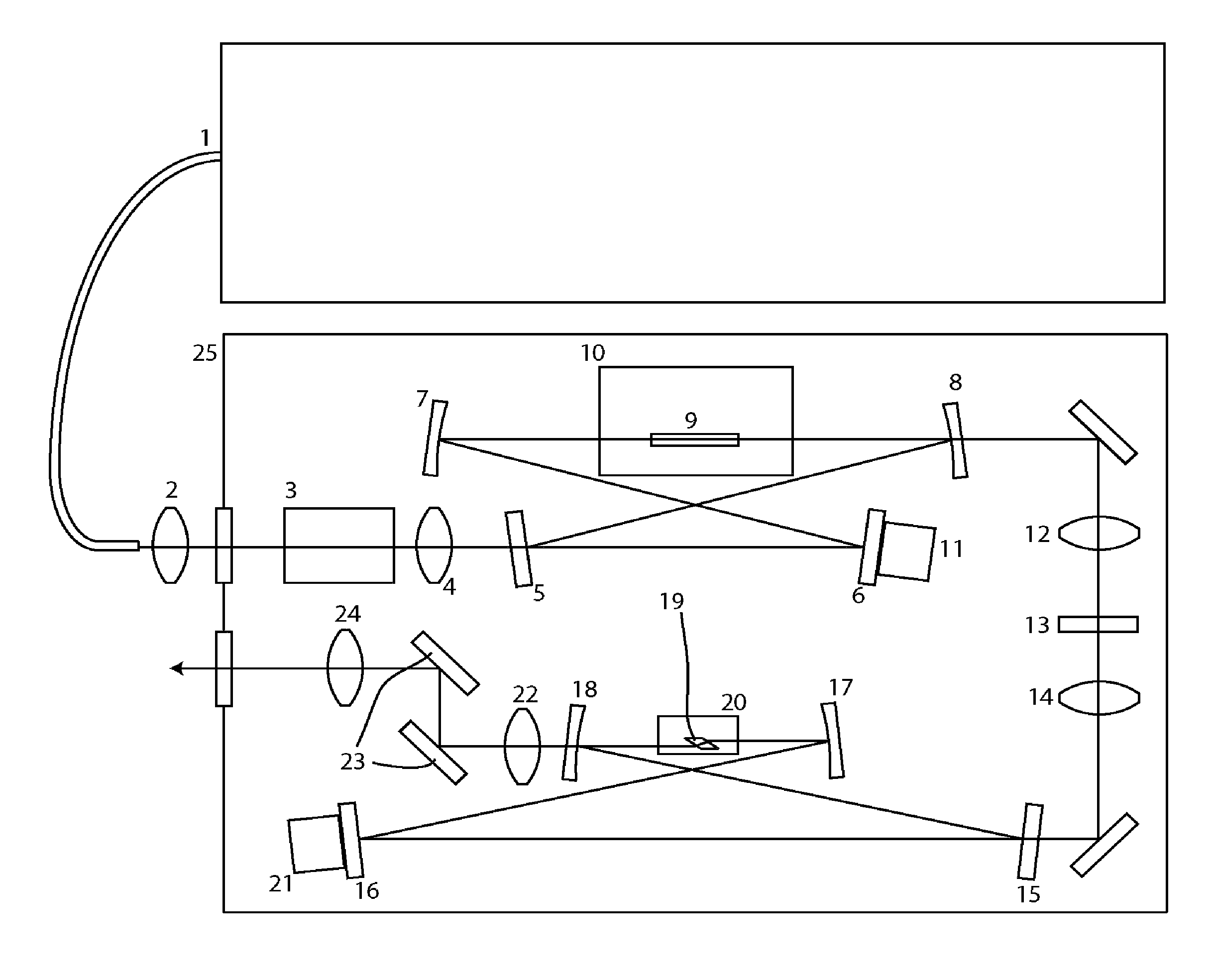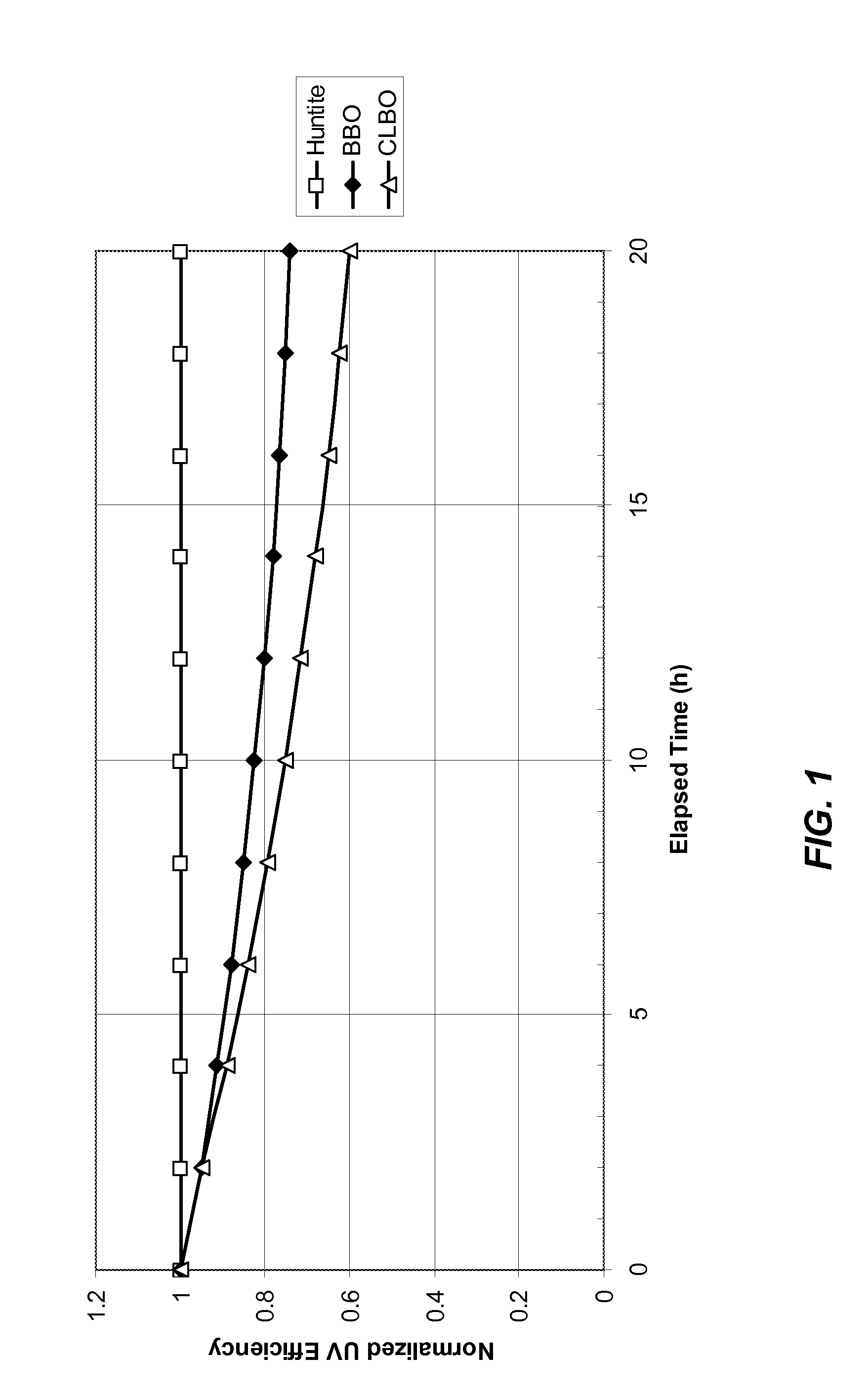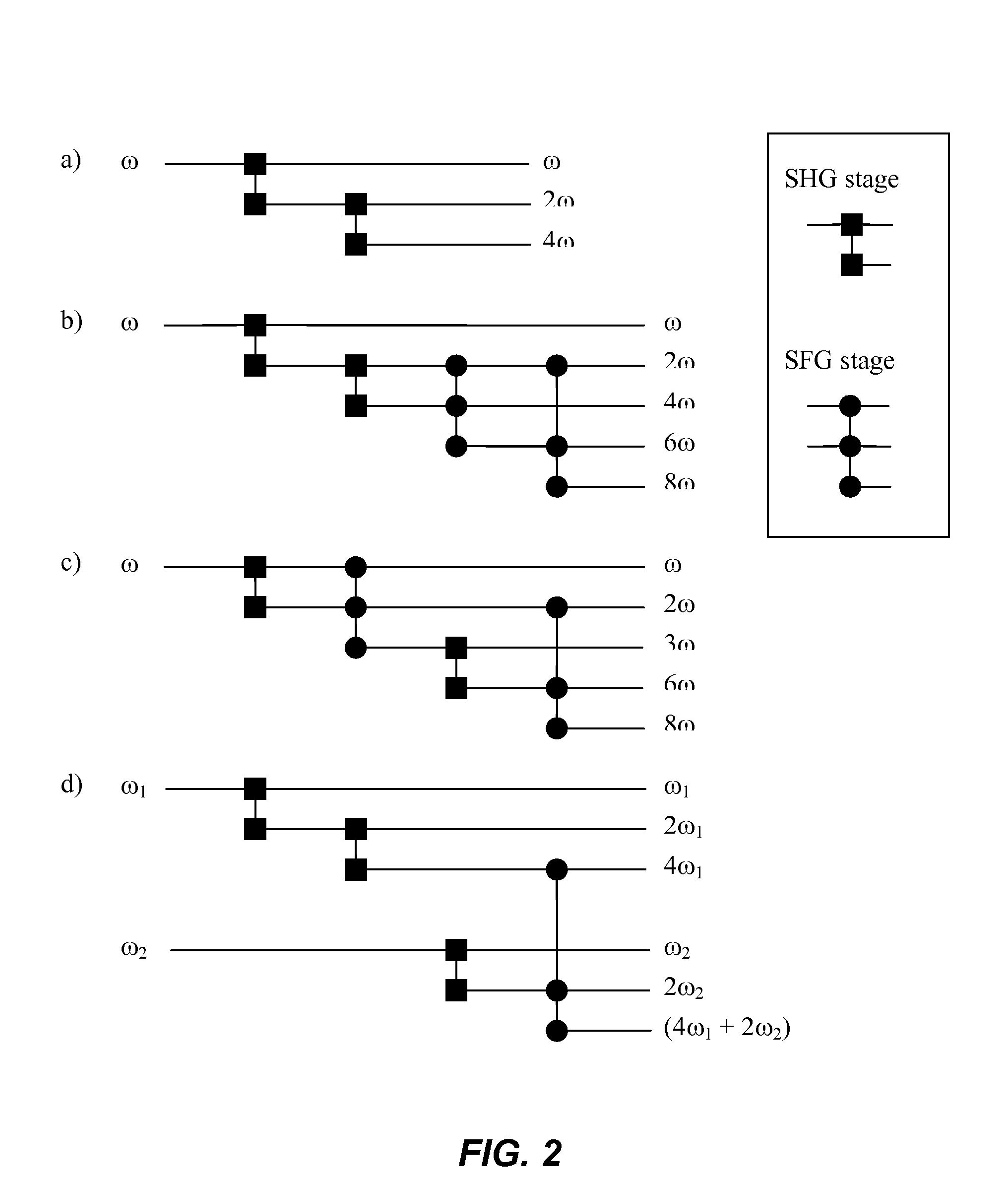Method and apparatus for continuous wave harmonic laser
a harmonic laser and continuous wave technology, applied in the field of compound lasers, can solve the problems of unacceptably low overall power conversion efficiency, limited operating life of lasers, and inability to significantly transform into commercial products, and achieve the effects of increasing device optical output power, reducing device maintenance costs and/or downtime, and increasing device longevity
- Summary
- Abstract
- Description
- Claims
- Application Information
AI Technical Summary
Benefits of technology
Problems solved by technology
Method used
Image
Examples
Embodiment Construction
[0042]Without limiting embodiments of the present invention, the following glossary is provided in relation to the description herein.
[0043]Brewster's angle: The angle of incidence, relative to a given interface between two materials with a given choice of which side of the interface is the incident side, for which light that is polarized having its electric field lying in the plane of incidence is theoretically transmitted through the interface with none of the light being reflected. The special polarization is sometimes referred to as p-polarization or TM polarization.
[0044]Cavity: refers to an optical path defined by two or more reflecting surfaces, or by a waveguide or a fiber, along which light can reciprocate or circulate. Objects that intersect the optical path are said to be within the cavity.
[0045]Continuous wave (CW) laser: A laser that emits radiation continuously in time rather than in short bursts, as in a pulsed laser.
[0046]Deep ultraviolet (DUV): A portion of the elec...
PUM
| Property | Measurement | Unit |
|---|---|---|
| wavelength | aaaaa | aaaaa |
| wavelength | aaaaa | aaaaa |
| wavelengths | aaaaa | aaaaa |
Abstract
Description
Claims
Application Information
 Login to View More
Login to View More - R&D
- Intellectual Property
- Life Sciences
- Materials
- Tech Scout
- Unparalleled Data Quality
- Higher Quality Content
- 60% Fewer Hallucinations
Browse by: Latest US Patents, China's latest patents, Technical Efficacy Thesaurus, Application Domain, Technology Topic, Popular Technical Reports.
© 2025 PatSnap. All rights reserved.Legal|Privacy policy|Modern Slavery Act Transparency Statement|Sitemap|About US| Contact US: help@patsnap.com



